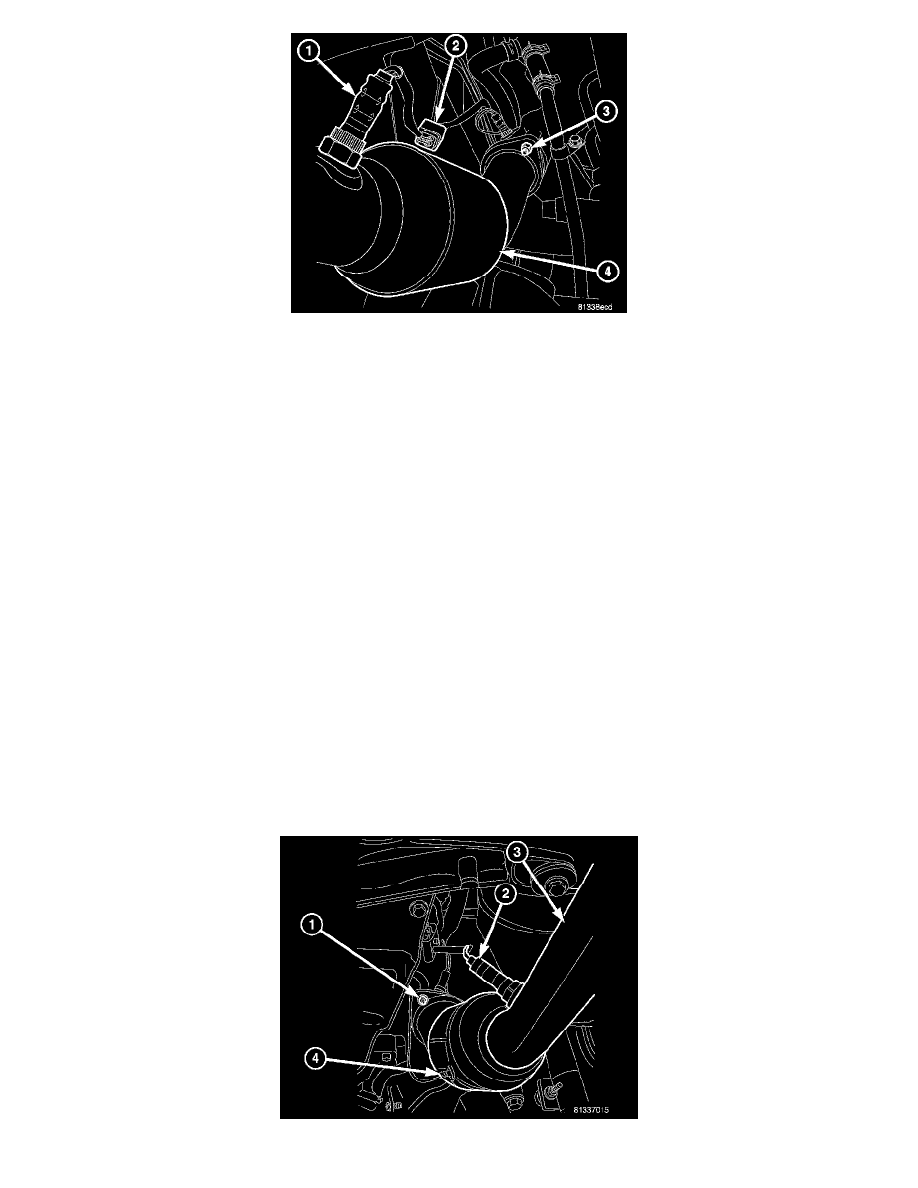Magnum SRT-8 V8-6.1L VIN 3 (2006)

1. Raise vehicle on hoist.
2. Hoist vehicle.
WARNING: The normal operating temperature of the exhaust system is very high. therefore, never work around or attempt to service
any part of the exhaust system until it is cooled. special care should be taken when working near the catalytic converter. The temperature
of the converter rises to a high level after a short period of engine operation time.
3. Disconnect downstream oxygen sensor electrical connectors.
4. Remove muffler and resonator assembly.
5. Remove ball flange nuts.
6. Remove catalytic converter ball flange nut.
7. Remove catalytic converter.
INSPECTION
WARNING: THE NORMAL OPERATING TEMPERATURE OF THE EXHAUST SYSTEM IS VERY HIGH. THEREFORE, NEVER
ATTEMPT TO SERVICE ANY PART OF THE EXHAUST SYSTEM UNTIL IT IS COOLED. SPECIAL CARE SHOULD BE TAKEN
WHEN WORKING NEAR THE CATALYTIC CONVERTER. THE TEMPERATURE OF THE CONVERTER RISES TO A HIGH
LEVEL AFTER A SHORT PERIOD OF ENGINE OPERATION TIME.
Check catalytic converter for a flow restriction.
Visually inspect the catalytic converter element by using a borescope or equivalent. Remove oxygen sensor(s) and insert borescope. If borescope is
not available, remove converter and inspect element using a flashlight. Inspect element for cracked or melted substrate.
NOTE: Before replacing a catalytic converter, determine the root cause of failure. Most catalytic converter failures are caused by air, fuel or ignition
problems.
INSTALLATION
RIGHT HAND CATALYTIC CONVERTER
